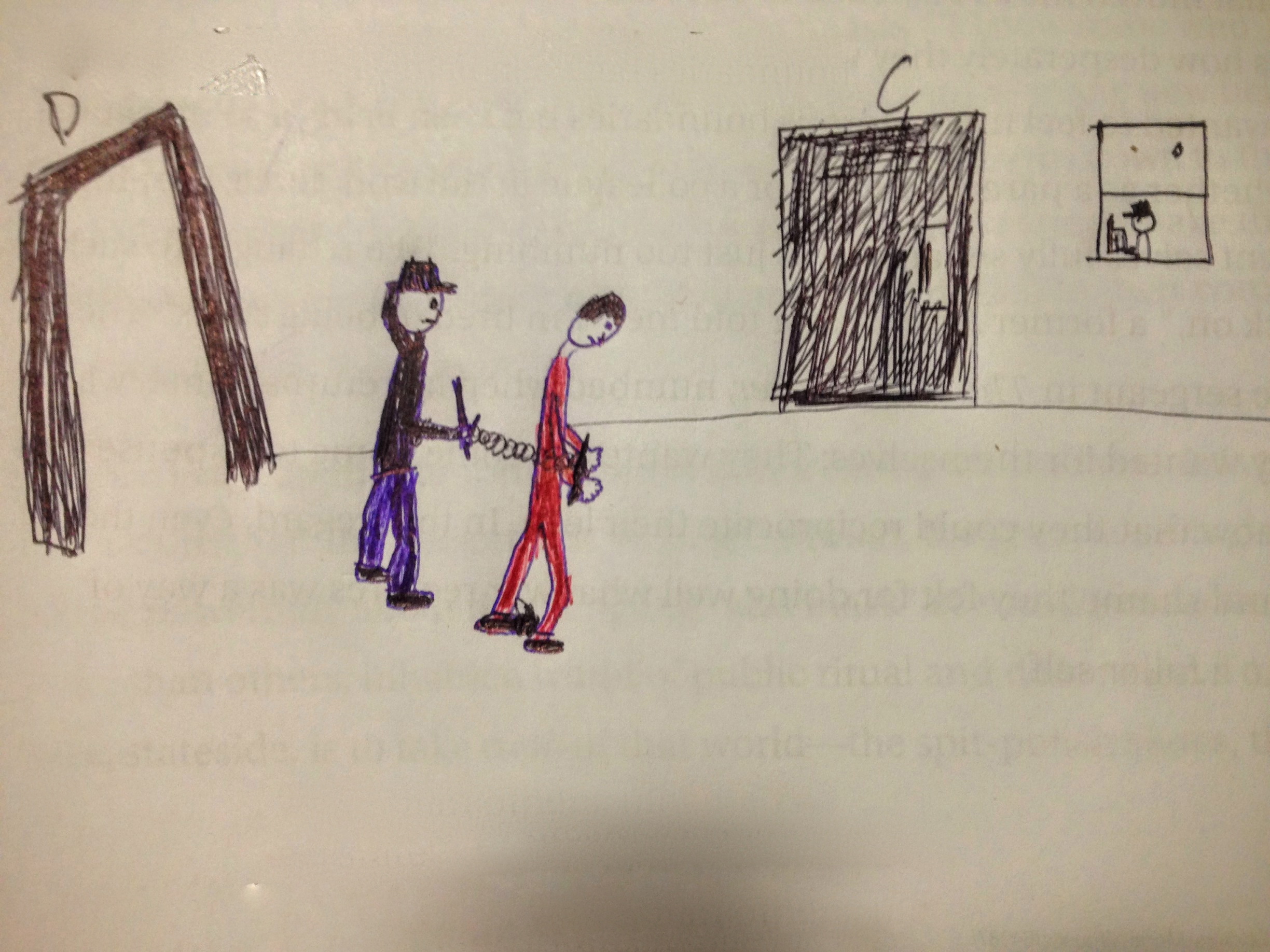March 22, 2016 - 03:17

This week, I have been thinking a lot about solitary confinement in the United State's current prison system. This was spurred by my last experience tutoring for the Petey Greene program during which I passed by someone who was being escorted in ankle and wrist shackles back to his cell. He was looking at the ground very intently and looked much more dejected than any of the other people I had seen in the CFCF any other of the weeks I had been there. I asked the teacher I work with and who was escorting me to the classroom about him and she explained how he was being escorted out of, "the hole." The realization that the facility in which I volunteer adheres to the practice that I, in another class, have been unapologetically tearing apart shocked me. In relation to what we have read regarding experiences of trauma in war; it is clear to me that, if we are to assume that humans are inherently social creatures who need a base of human stability to, feel safe, go about their daily lives, and develop, the practice of solitary confinement, in its definition, elimnates the possibility of achieiving that base. Trauma, I believe, can be born out of experiences that involve incredible moments of danger and fear, but can also develop in the absence of the affirmation of one's humanity. That man I walked by, as I have read, could have not only felt cut off from everyone else, but felt detached from his own identity as well.


Comments
a base of human stability
Submitted by alesnick on March 22, 2016 - 08:40 Permalink
I appreciate these insights linking isolation with trauma. I also hear a connection to your own experience -- dealing with the fact that a place where you volunteer is also a place you strongly criticize, and wondering what forms your stable base of support in working with this tension.